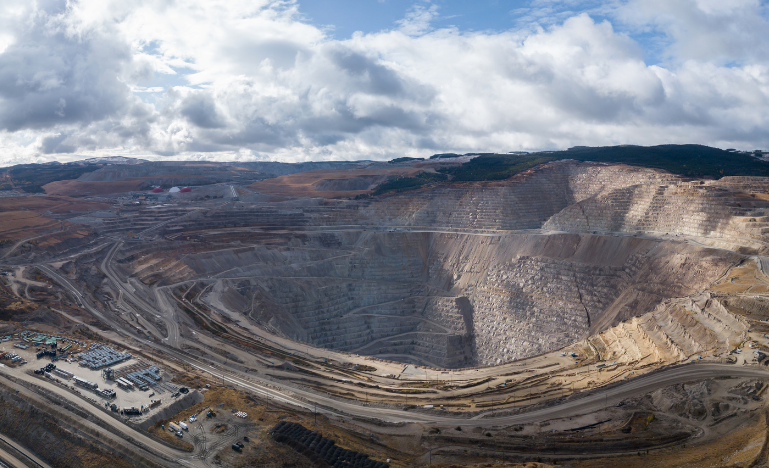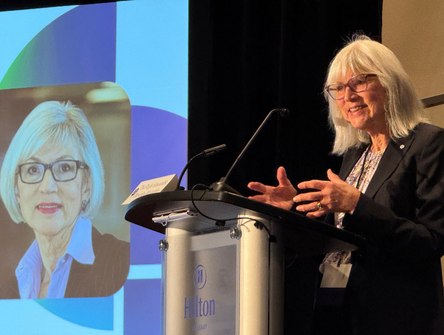What is in the ‘national interest?’
While the Building Canada Act is intended to fast-track projects, it doesn't actually define the broad term driving decisions

In a recent pre-budget address, Prime Minister Mark Carney said his government has the fiscal capacity to spur “unprecedented” private investment in the coming five years.
“Now is not the time to be cautious, because fortune favours the bold,” he told the University of Ottawa crowd.
Last month, Carney unveiled the first five PONIs – projects of national interest – and promised more by Grey Cup weekend in mid-November. It’s part of the plan to foster the growth of a new Canadian economy in response to U.S. protectionism.
While his government’s Building Canada Act is intended to allow the projects to jump the hurdles in a time-consuming regulatory process, just what constitutes the “national interest” remains unclear, as it’s not defined in the legislation.
Indigenous leaders and environmentalists are questioning the broad term that is the keystone of the Carney government’s infrastructure legislation, which was rushed through Parliament in June.
“It should be defined, with engagement with First Nations,” says Kate Kempton, a lawyer representing nine Ontario First Nations in a constitutional challenge of Ottawa’s C-5 and Ontario’s me-too Bill 5.
Among the first five PONIs is LNG Canada Phase 2, which would double the liquified natural gas output in Kitimat, B.C. and make it the second-largest facility of its kind in the world.
“We’re disappointed that a carbon bomb of an LNG project is considered to be in the national interest,” says Anna Johnston, a staff lawyer with West Coast Environmental Law (WCEL).
WCEL was among the coalition of Canadian environmental, nature, and climate organizations that sent an open letter to the prime minister and key Cabinet ministers in September, calling on the federal government to adopt seven clear, transparent criteria for determining which projects are genuinely in the national interest.
“To ensure that national interest projects deliver long-term benefits to Canada, we believe that projects can only be in the national interest if they uphold the rights of Indigenous peoples, protect the environment, foster sustainability, and help achieve a stable climate, thriving nature, intergenerational and intra-generational equity, and environmental justice,” the letter states.
After another summer of wildfires, drought, and heatwaves, the coalition says it’s in Canada’s national interest to pursue projects that set the country on a path to net-zero emissions and a thriving natural environment, not outdated and expensive fossil fuel projects that fuel further climate and environmental breakdown.
“Projects like high-speed rail, remote transit services, renewable energy and inter-provincial transmission, and clean drinking water and telecommunications services in Indigenous communities are nation-building, not pipelines that put our coasts at risk and pit communities and provinces against each other.”
However, Martin Olszynski, an associate professor and chair in energy, resources and sustainability at the University of Calgary’s Faculty of Law, points out that First Nations in the Kitimat area support the LNG expansion, as they’re “looking for jobs, they’re looking for investment.”
There is no “silver bullet” solution, he says. Instead, it’s more of a silver buckshot, a term he defines as “muddling through.”
“It’s trying different things and adjusting and pivoting and moving ahead, and hoping that is going to work. Of course, hope is not enough. But there is also such a thing as over-planning.”
The Building Canada Act does not define the “national interest” except to say the chosen projects would: strengthen Canada’s autonomy, resilience and security; provide economic or other benefits to Canada; have a high likelihood of successful execution; advance the interests of Indigenous peoples; and contribute to clean growth and to meeting Canada’s objectives with respect to climate change.
Some wonder if the expedited timelines are realistic.
In a paper entitled “A New Blueprint for Nation Building Projects,” McMillan LLP notes that the legislation will replace “multi-year, multi-agency delays” with “a single authorizing document,” aiming to reduce approval time from five years to two.
Sharon G.K. Singh, one of three lawyers who co-wrote the paper and co-leads the firm's Indigenous and Environmental practices, has reservations about that.
She agrees that there is a consensus that the regulatory processes need to be streamlined, allowing for timely decision-making, “whether that decision is a yes or a no.”
But even with the streamlined process designating PONIs, there’s still “a whole wack of regulatory approvals that are necessary to actually enable shovels in the ground,” she says, which complicates the promise of “one project, one review.”
While C-5 excludes consideration of 16 federal statutes, such as the Access to Information Act, the Criminal Code and the Official Languages Act, and sidelines the planning phase in the Impact Assessment Act, section 2 of that act does impose consideration of environmental, economic, health, social and Indigenous rights that a project must respect.
The reality is, even with C-5, “projects take much longer than two years, much longer than five years,” Singh says.
Melissa Stoesser Young, a McMillan partner in Calgary who specializes in energy and co-authored the New Blueprint document, believes that Canada can continue to develop oil and gas while also addressing climate change.
“I don't see them as being mutually exclusive,” she says.
“I think there's been a lot of focus on environmentally responsible stewardship of our national resources and assets, and I think Canada has frankly been a leader in that, considering that we are the country with the fourth largest reserves of oil and gas.”
Asked about how the national interest fits in with the projects chosen, Singh says it’s a “very loaded question.”
“If you ask four people, they'll give you 10 answers.”
For Stoesser Young, the national interest is a matter of “taking into consideration all Canadians, and obviously that includes First Nations.”
“Historically, they've been left behind,” she says.
“I'm personally quite proud of our country, that we are leading in having First Nations become equity participants in major projects.”
For its part, the Assembly of First Nations deplores the fact that free, prior, and informed consent (FPIC), the guiding principle of the United Nations Declaration on the Rights of Indigenous Peoples, is not included in the Building Canada Act.
Many also took issue with the lack of consultation about C-5 and the fact it fails to clearly respect Indigenous rights as set out in section 35 of the Charter.
The Carney government’s response was to create an Indigenous Advisory Council, comprised of nine First Nations, one Métis, and one Inuit member. In announcing the council, the government stated that it will “help guide the Major Projects Office,” with a focus on equity ownership and meaningful participation by Indigenous peoples.
Kempton, who is senior counsel at Woodward & Company LLP, doesn’t see the IAC as a valid substitute for FPIC, dismissing it as a “cheap trick.”
“Free, prior and informed consent is at a government-to-government level- what’s going to happen on shared territory,” she says.
Olszynski, who does not see the Carney government further clarifying what it means by the “national interest,” applauds the naming of Dawn Farrell to head the Major Projects Office, given her track record of “getting things done.”
Johnston, however, is appalled by the choice, as Farrell previously headed the Trans Mountain pipeline project.
“The pipeline is costing taxpayers $34 billion,” she says.
“It’s very likely that we will ever recoup those costs. It’s not running at full capacity. It was not a good investment.”


